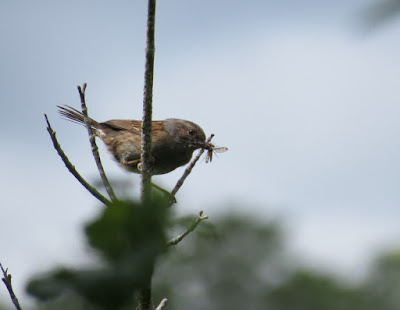I started at the flashes, and it was fantastic. Having got used to watching Springwatch this week, I discovered that Upton Warren is now a mini-Minsmere. A sturdy fence all around it keeps out the ground predators, and the birds have responded in spades.
The hide now has a bottom tier, which opens up the possibility of taking Lyn on future visits. In front of the hide, everything is nesting.
 |
| Eight-legged Avocet |
 |
| Avocet with bigger chicks |
 |
| Black-tailed Godwits |
Another breeding wader was Little Ringed Plover, and I could see two incubating birds. A quick look at the log-book told me that a pair of Shoveler had hatched a brood of ducklings for the second successive year after a 67 year absence. I scanned the third flash and was just in time to see the pair, with at least two tiny ducklings, before they swam out of view. Another adult male was much closer to the hide.
 |
| drake Shoveler |
 |
| A brood of Shelducklings |
Many of the birds, particularly the Black-headed Gull chicks started pointing their bills skywards to reduce the dampening of their plumage/down. Suddenly some passage waders arrived.
 |
| Ringed Plovers |
A Cuckoo had been calling when I arrived but the rain shut it up. When the rain eased off I decided to head back. The gravel pit was now hosting over 100 House Martins, 30 Sand Martins, and 30 Swallows plus a few Swifts.
I drove to the Moors Pool to find it too was covered in birds, but a different cast. Two pairs of Oystercatchers had young.
 |
| Oystercatcher and chick |
Cetti's Warblers sang, but evaded my lens. I had to settle for a Dunnock with a crane-fly all ready to be stuffed in its offspring's gape.
Better than Morton Bagot? Just a bit!



No comments:
Post a Comment